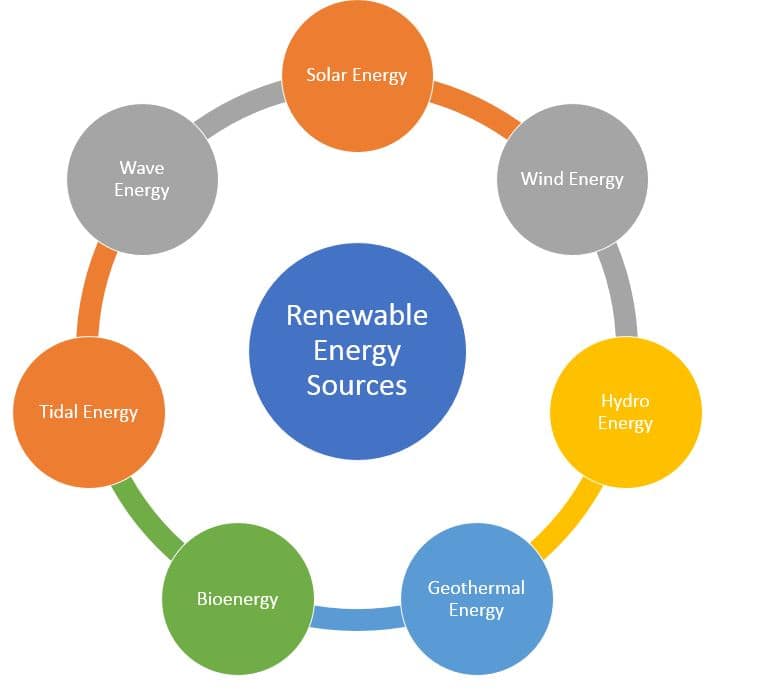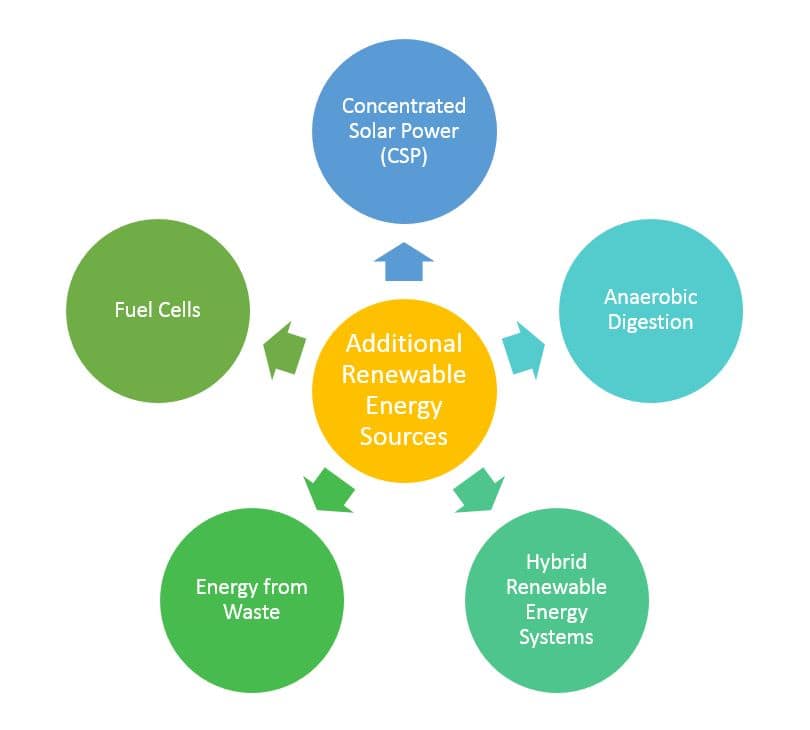Will Renewable Energy Solve the World’s Energy Crisis?
The world is facing an energy crisis, with traditional sources of fuel rapidly depleting and causing harmful effects on the environment. As a result, there is a growing interest in renewable energy(RE) as a solution to this crisis. Renewable energy sources, such as wind, solar, and hydropower, have the potential to provide a clean and unlimited source of power. However, the question remains: will renewable energy be enough to solve the world’s energy crisis? In this article, we will examine the current state of renewable energy and its impact on global energy consumption, as well as the potential it has to provide a sustainable solution to the energy crisis.
Overview of the Global Energy Crisis
The global energy crisis is a result of rising energy demand and limited non-renewable sources, like
- Coal
- Oil
- Gas
These are finite and run out quickly. This leads to higher costs and negative effects on the environment.
The burning of fossil fuels also contributes to greenhouse gas emissions and climate change. As a result, there is a growing need for alternative sources of energy that are clean, renewable, and sustainable. The global energy crisis affects economies, societies, and the environment and requires immediate action. Innovative solutions will address the challenge.
Different Types of Renewable Energy Sources
There are a variety of renewable energy sources. Using those energy sources can generate clean, sustainable energy. The best energy source for a specific location or use depends on factors like cost, availability, and environmental impact. Each source has its own pros and cons.

In addition to these sources, there are also many other emerging and innovative renewable energy technologies, such as,
- Algae-based biofuels
- Piezoelectric materials
- Energy harvesting from sources such as human activity, vehicles, and even buildings.
These sources are becoming more accessible and diverse, driving the shift to a greener and more sustainable future.

Advantages of Renewable Energy over Traditional Sources of Fuel
Renewable energy has several advantages over traditional sources of fuel that make it a compelling solution to the global energy crisis.
Firstly, renewable energy sources are sustainable and do not run out, unlike fossil fuels which are finite and rapidly depleting. This makes renewable energy a long-term solution to the energy needs of the world.
Secondly, These sources are environmentally friendly, emitting no harmful pollutants or greenhouse gases that contribute to climate change. This makes renewable energy a cleaner alternative to traditional sources of fuel.
Renewable energy technology costs have dropped, making it more affordable and competitive with traditional sources. It also;
- Creates jobs
- Boosts local economies
- Reduces energy imports
- Increases energy independence
Furthermore, by reducing air and water pollution, renewable energy can improve public health outcomes, reducing the burden on healthcare systems. Overall, renewable energy offers a cleaner, more sustainable, and cost-competitive solution to the global energy crisis.
Current State of Renewable Energy and Its Impact on Global Energy Consumption
The current state of renewable energy is rapidly advancing, and its impact on global energy consumption is increasing. In recent years, there has been significant growth in the use of renewable energy sources. such as
- Wind
- Solar
- Hydropower.
According to the International Energy Agency (IEA), renewable energy accounted for almost 85% of new power capacity additions in 2020. In terms of total energy production, renewable sources currently account for around 26% of global electricity generation. The trend of declining renewable energy technology costs and growing renewable energy targets is expected to continue in the future.
The impact of renewable energy on global energy consumption is significant. It is helping to reduce the use of non-renewable sources of fuel and the associated greenhouse gas emissions. In addition, renewable energy is increasing energy security by reducing dependence on energy imports, and it is stimulating local economies by creating jobs in the renewable energy sector.
Overall, the current state of renewable energy is promising and its impact on global energy consumption is positive. There’s still much work to be done to fully tap into renewable energy’s potential to solve the world’s energy crisis.
Overcoming technical and financial obstacles, and investing in research and development of renewable energy technologies, will increase its widespread adoption.
Potential of Renewable Energy to Solve the Energy Crisis
The potential of renewable energy to solve the energy crisis is significant. Renewable energy sources have the capacity to meet the growing energy demands of the world while reducing dependence on non-renewable sources of fuel.
Renewable energy also has the potential to address environmental issues such as climate change by reducing greenhouse gas emissions. By using clean and renewable sources of energy, it is possible to transition away from the use of fossil fuels and towards a more sustainable energy future.
The potential of renewable energy to solve the energy crisis is supported by advances in renewable energy technology and declining costs. Solar panels and wind turbines, for example, are becoming more efficient and affordable, making renewable energy a more accessible and viable option for many countries and communities.
The potential of renewable energy to solve the energy crisis is substantial. With the right investments and policies in place, it is possible to transition to a cleaner and more sustainable energy future, addressing the energy crisis and ensuring energy security for future generations.
Barriers to Widespread Adoption of Renewable Energy
There are several barriers to the widespread adoption of renewable energy, despite its potential to solve the energy crisis. Addressing these barriers will require a combination of government policy, private-sector investment, and public education and awareness.
- Cost: Although the cost of renewable energy technology has declined in recent years, it is still more expensive than traditional sources of fuel in many cases.
- Technical Challenges: The integration of renewable energy into existing energy systems can be technically challenging and requires investment in new infrastructure and technologies.
- Policy and Regulatory Challenges: In many countries, the policy and regulatory environment are not yet supportive of the widespread adoption of renewable energy.
- Public Acceptance: There is still some public resistance to the widespread adoption of renewable energy, particularly in rural areas where renewable energy projects may be seen as intrusive.
- Access to Finance: Access to finance is a major barrier to the deployment of renewable energy projects, particularly in developing countries.
Innovations and Advancements in Renewable Energy Technology
In recent years, there have been numerous innovations and advancements in renewable energy technology. Those are helping to make renewable energy a more viable and attractive option for meeting the world’s energy needs.
- Improving Efficiency: Renewable energy technologies such as solar panels and wind turbines are becoming more efficient.
- Declining Costs: The cost of renewable energy technology has declined significantly in recent years, making it more accessible and affordable for governments, businesses, and individuals.
- Increased Energy Storage: Advances in energy storage technology are making it possible to store renewable energy for use when it is needed.
- Innovations in Grid Integration: Innovations in grid integration are making it easier to integrate renewable energy into existing energy systems.
- Development of New Renewable Energy Sources: There are ongoing efforts to develop new renewable energy sources, such as offshore wind and tidal power.
Future Outlook for Renewable Energy and Its Role in Solving the Energy Crisis
The future outlook for renewable energy is very positive, with renewable energy expected to play an increasingly important role in solving the energy crisis. Here are some key trends and predictions:
- Continued Growth: Countries are increasing their ambitious targets for renewable energy use, fueling growth in the renewable energy sector.
- Falling Costs: Renewable energy’s cost is projected to decrease, making it accessible and affordable for governments, businesses, and individuals.
- Increased Energy Storage: Advances in energy storage technology are expected to continue, enabling more renewable energy to be stored for use when it is needed.
- Wider Adoption: Renewable energy is expected to become more widely adopted, particularly in developing countries where there is a growing demand for energy.
- Greater Integration: Renewable energy is expected to become increasingly integrated into existing energy systems, with innovations in grid integration helping to overcome some of the technical challenges associated with renewable energy.
The future outlook for renewable energy is very positive, with renewable energy expected to play a critical role in solving the energy crisis. With continued advancements in renewable energy technology and increased investment, it is possible to transition to a cleaner and more sustainable energy future.
Consumer Behavior and the Impact of Individuals on Renewable Energy (RE) Adoption
Individuals play a critical role in the shift to RE and a greener future. You can support renewable energy by choosing it, investing in it, and advocating for it. You can also reduce the demand for fossil fuels by consuming less energy, using energy-efficient products, and changing energy habits.
Raising awareness is crucial in the adoption of renewable energy. Educate others on its benefits and impact on the environment. Take personal responsibility to promote renewable energy and work towards a future with accessible clean energy for all.
Conclusion and Summary of the Potential of Renewable Energy to Solve the Energy Crisis
Renewable energy (RE) solves the energy crisis with its eco-friendly and cost-effective benefits. But, obstacles such as poor energy storage, regulations, and lack of public understanding hinder its widespread use.
Challenges hinder the widespread adoption of RE, but technology and investment are overcoming obstacles and driving growth. This solves the energy crisis with renewable energy’s benefits.
Advancements and investment drive the success of RE, and individual actions also play a role. Supporting RE and reducing carbon footprints creates a cleaner energy future.
In conclusion, renewable energy has the potential to be a game-changer in solving the energy crisis. Investment, innovation, and action are needed to fully harness the potential of renewable energy and build a greener future. Consumers can also help by making eco-friendly choices and reducing their carbon footprint.



0 Comments